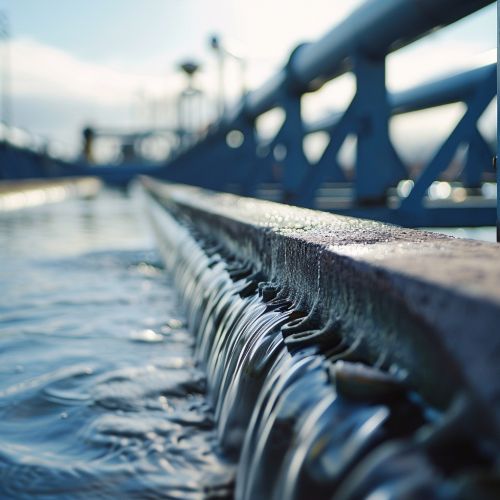Nanotechnologys Role in Improving Water Treatment Processes
Introduction
Nanotechnology, the manipulation of matter on an atomic and molecular scale, has emerged as a powerful tool in various fields, including water treatment processes. This article explores the role of nanotechnology in improving water treatment processes, focusing on the scientific principles, applications, and potential impacts on society and the environment.


Principles of Nanotechnology in Water Treatment
Nanotechnology employs nanoparticles, which are particles between 1 and 100 nanometers in size, to enhance the efficiency and effectiveness of water treatment processes. The unique properties of nanoparticles, such as their high surface area to volume ratio and their ability to interact at the molecular level, make them ideal for use in water treatment.
Nanoparticles
Nanoparticles are the primary agents of nanotechnology. They can be made from a variety of materials, including metals, ceramics, polymers, and composites. Their small size gives them unique properties, such as high reactivity and the ability to penetrate cell membranes, that are not found in larger particles of the same materials.
Nanofiltration
Nanofiltration is a water treatment process that uses a membrane with nanopores to remove contaminants from water. The membrane acts as a physical barrier that blocks the passage of contaminants while allowing water molecules to pass through. This process is effective in removing a wide range of contaminants, including bacteria, viruses, heavy metals, and organic compounds.
Applications of Nanotechnology in Water Treatment
Nanotechnology has been applied in various aspects of water treatment, including filtration, disinfection, and contaminant removal.
Filtration
Nanotechnology-enhanced filtration systems use nanoparticles to improve the efficiency and effectiveness of water filtration. For example, carbon nanotubes and graphene oxide membranes have been used to increase the flow rate and selectivity of water filtration systems.
Disinfection
Nanotechnology can also be used to disinfect water. Silver nanoparticles, for instance, have been used for their antimicrobial properties. When these nanoparticles come into contact with bacteria or viruses, they can damage the cell membranes, leading to cell death.
Contaminant Removal
Nanotechnology can also be used to remove contaminants from water. Iron nanoparticles, for example, have been used to remove arsenic from water. The iron nanoparticles react with the arsenic to form insoluble compounds that can be easily removed from the water.
Impact of Nanotechnology on Water Treatment
The use of nanotechnology in water treatment has the potential to significantly improve the efficiency and effectiveness of water treatment processes. However, it also raises concerns about potential environmental and health impacts.
Benefits
Nanotechnology can improve the efficiency and effectiveness of water treatment processes by increasing the speed and selectivity of filtration, enhancing disinfection processes, and enabling the removal of a wider range of contaminants. This can result in cleaner, safer water.
Concerns
Despite the potential benefits, there are concerns about the environmental and health impacts of nanotechnology. For example, the release of nanoparticles into the environment could have unknown impacts on ecosystems. Additionally, the potential for nanoparticles to penetrate cell membranes raises concerns about their impact on human health.
Conclusion
Nanotechnology has the potential to significantly improve water treatment processes. However, more research is needed to fully understand the potential environmental and health impacts of this technology. As our understanding of nanotechnology continues to grow, it is likely that its use in water treatment will continue to evolve and expand.
